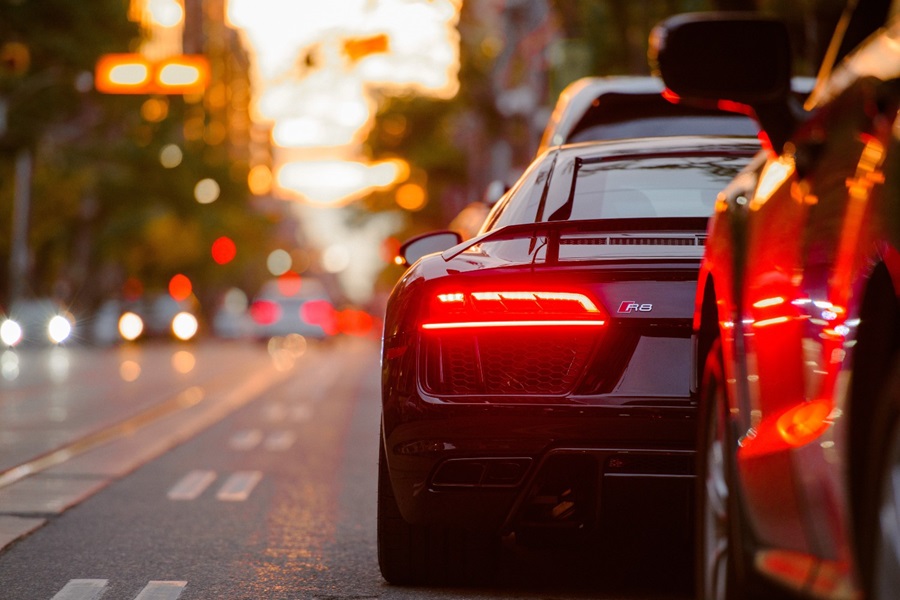Around this time two years ago, we wrote a blog about the Paris motor show. It was a whistle-stop showcase of the best and most exciting innovations on display. One paragraph was devoted entirely to mobility, as it was the first time we’d seen such a focus on the topic. We talked about the smart thinking being done by auto brands around issues like car sharing and how to complete the final mile of the urban journey. And we finished, almost drooling with anticipation at what mobility masterstrokes we’d see in 2018.
Imagine our surprise then, when strolling round this year’s iteration of the bi-annual event, that mobility barely got a mention. Instead of seeing the amazing, bold mobility innovations that we know manufacturers are currently developing, we were faced with what was essentially a huge car showroom, plus an amazing, 3-million piece, fully driveable Lego Bugatti Chiron. All the new models from BMW, DS, Kia, Porsche and Mercedes were there as you might expect, and each of these manufacturers paid lip service to mobility.
But not one of them took the opportunity to boost their urban, eco credentials with a game-changing mobility solution. To be honest the only game they were playing was called ‘don’t rock the boat’, a pastime that almost invariably results in a few tweaks to the line of a B pillar or a slightly longer wheelbase for an extra two centimetres of legroom in the back. And of course, another way to play that game is to show concept cars so futuristically outlandish, expensive and impractical that they won’t make any sense for another 20 years. No manufacturer seemed willing or able to fill the mobility gap between where we are now and where we’ll be in two decades’ time.
Don’t get us wrong, there was plenty to admire at this year’s show, where electrification was a common theme. Peugeot’s jaw-dropping e-LEGEND, an electric powered retro homage to their 1970s 504 coupe, combines all the eco-friendliness of zero emissions with the carefree freedom of beautiful lines and rapid progress. There were also hybrid and electric innovations from Honda, Mercedes and Kia and an interesting concept from DS, that offers drivers a choice of autonomous transit to their destination, or the ability to take full control and experience total driving freedom.
Interestingly though and flying in the face of everything that is practical and realistic about mobility, is the sheer size of the new models on display. Rather than embracing the need for smaller cars to make urban driving and parking a more pleasant experience, auto brands seem to have pumped steroids into their latest models. BMW’s new 3 series, for example is now bigger in every way than the iconic E39 5 series of 20 years ago. Only Toyota and Suzuki seem to understand that less is more in today’s congested towns and cities. The revamped Yaris is as diminutive as ever, while the all-new hybrid Corolla and cheeky little tax-beating Jimny 4x4 are slim and agile, perfect for snaking through downtown Tokyo. That’s somewhere you might also find new all-electric premium from Audi (e-tron) and Mercedes (EQC) – genuine rivals to Tesla, who surprisingly had one of the least adventurous stands in Paris. Of course, with better mobility solutions in place, none of these cars would have to venture within a mile of Tokyo’s up and coming Ikebukuro district.
But perhaps most worrying about how mobility is currently viewed is that it had its own hall at Paris 2018. To many this might seem like giving an important issue its own platform, but to us it does exactly the opposite. Mobility should be a fundamental, strategic part of manufacturers’ mainstream visions. Shoving it into its own room is equivalent to keeping noisy, gifted children out of sight when elderly, strait-laced relatives come to visit. Just like the children, mobility needs to be integrated. How else will it come to be accepted and appreciated? New developments in car sharing, e-hailing, park and ride and multi-modal last mile solutions didn’t feel like they were part of the auto ecosystem at this year’s show.
Yes, mobility asks hard questions. Yes, it might threaten manufacturing output. And yes, it isn’t easy to quantify or explain due to different cultures, legislation and infrastructure. But it is a critical societal shift that will happen, whether auto brands like it or not. The lack of mobility projects at this year’s show highlights the paradox automotive brands are facing right now: the real-world problems of congestion and pollution versus the general public’s desire to see their dream cars up close. The Paris motor show has always been a place where people could see unattainable automotive fantasy, but perhaps manufacturers could use this lust as bait to showcase more eco-friendly and realistic technologies. The paradox is exemplified by many manufacturers who champion urban mobility on the one hand choosing to exhibit “non-urban oriented” models. Some appear to be betting on a world where congestion free cities allow people to move in a multimodal way, using autonomous shuttles and other public transportation systems, while they develop big, dream car models for the small group of people who are still attached to the prestige of ownership.
For mobility to work properly it needs to capture the hearts, minds and pockets of private companies, public sector policy makers and the general public. We know we are tempting fate by saying this, but we can’t wait to see if manufacturers are willing to share their undoubted investment into mobility with that crucial third audience, especially big mobility players like Ford and Volvo who didn’t make it to this year’s show at all. This year, those that did attend they played their mobility cards very close to their chest and it seemed like a huge, missed opportunity. Hopefully next time around they’ll make it a central theme on their stands. So, we’ll see you back here - same time, same place in 2020 to find out.
